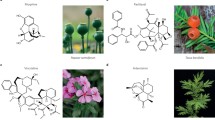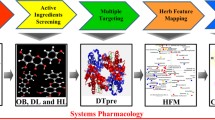Abstract
In the past century, as medical research has become increasingly precise, it has become clear that the incidence and progression of many diseases involve multiple factors and pathologies; this is particularly true for the degenerative and metabolic diseases facing industrialized societies. At the same time, it becomes increasingly clear that single-target action drugs cannot effectively treat these diseases. Researchers are looking toward the chemical industry as well as traditional herbal medicines to find multi-target interventions. Thus, a new era in drug discovery has begun. Specifically, three approaches have proven effective in seeking multi-target drugs. These are: (1) designing drugs with multiple components; (2) discovering drugs through the study of synergistic compound-compound interactions in medicinal herbs or among chemical drugs and herbal components; and (3) developing drugs to tackle complex multi-component diseases. The authors conclude that there is an increasing need for multi-component remedies to treat the complex chronic diseases afflicting modern populations. Given this situation and the growing body of evidence that these new approaches are effective, multi-target intervention appears to have great potential for discovering, designing, and developing effective new drugs for today’s diseases.
Similar content being viewed by others
References
Keith CT, Borisy AA, Stockwell BR. Multicomponent therapeutics for networked systems. Nat Rev Drug Discov 2005;4:71–78.
Zhang QY, Mao JH, Liu P, Huang QH, Lu J, Xie YY, et al. A systems biology understanding of the synergistic effects of arsenic sulfide and Imatinib in BCR/ABL-associated leukemia. Proc Natl Acad Sci USA 2009;106:3378–3383.
Stermitz FR, Lorenz P, Tawara JN, Zenewicz LA, Lewis K. Synergy in a medicinal plant: antimicrobial action of berberine potentiated by 5′-methoxyhydnocarpin, a multidrug pump inhibitor. Proc Natl Acad Sci USA 2000;97:1433–1437.
Liu ZQ, Zhou H, Liu L, Jiang ZH, Wong YF, Xie Y, et al. Influence of co-administrated sinomenine on pharmacokinetic fate of paeoniflorin in unrestrained conscious rats. J Ethnopharmacol 2005;99:61–67.
Liu ZQ, Jiang ZH, Liu L, Hu M. Mechanisms responsible for poor oral bioavailability of paeoniflorin: role of intestinal disposition and interactions with sinomenine. Pharm Res 2006;23:2768–2780.
Chan K, Liu ZQ, Jiang ZH, Zhou H, Wong YF, Xu HX, et al. The effects of sinomenine on intestinal absorption of paeoniflorin by the everted rat gut sac model. J Ethnopharmacol 2006;103:425–432.
Rhee I, Bachman KE, Park BH, Jair KW, Yen RW, Schuebel KE, et al. DNMT1 and DNMT3b cooperate to silence genes in human cancer cells. Nature 2002;416:552–556.
Land H, Chen AC, Morgenstern JP, Parada LF, Weinberg RA. Behavior of myc and ras oncogenes in transformation of rat embryo fibroblasts. Mol Cell Biol 1986;6:1917–1925.
Dotto GP, Parada LF, Weinberg RA. Specific growth response of ras-transformed embryo fibroblasts to tumour promoters. Nature 1985;318:472–475.
Land H, Parada LF, Weinberg RA. Tumorigenic conversion of primary embryo fibroblasts requires at least two cooperating oncogenes. Nature 1983;304:596–602.
Hsiao WL, Liu L. The role of traditional Chinese herbal medicines in cancer therapy—from TCM theory to mechanistic insights. Planta Med 2010;76:1118–1131.
Macián F, García-Cózar F, Im SH, Horton HF, Byrne MC, Rao A. Transcriptional mechanisms underlying lymphocyte tolerance. Cell 200 2002;109:719–731.
Li T, Wong VK, Yi XQ, Wong YF, Zhou H, Liu L. Matrine induces cell anergy in human Jurkat T cells through modulation of mitogen-activated protein kinases and nuclear factor of activated T-cells signaling with concomitant up-regulation of anergy-associated genes expression. Biol Pharm Bull 2010;33:40–46.
Li T, Wong VK, Yi XQ, Wong YF, Zhou H, Liu L. Pseudolaric acid B suppresses T lymphocyte activation through inhibition of NF-kappaB signaling pathway and p38 phosphorylation. J Cell Biochem 2009;108:87–95.
Author information
Authors and Affiliations
Corresponding author
Additional information
Supported by Hong Kong Baptist University (RC/08-09/GEN-043)
Rights and permissions
About this article
Cite this article
Tian, Xy., Liu, L. Drug discovery enters a new era with multi-target intervention strategy. Chin. J. Integr. Med. 18, 539–542 (2012). https://doi.org/10.1007/s11655-011-0900-2
Received:
Published:
Issue Date:
DOI: https://doi.org/10.1007/s11655-011-0900-2




